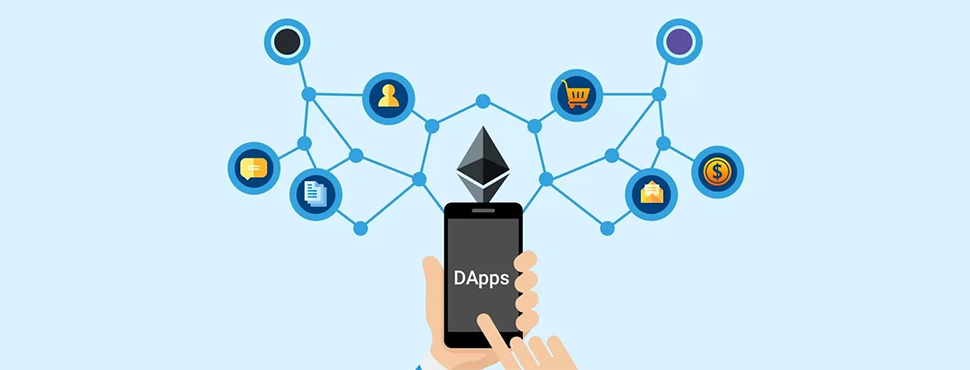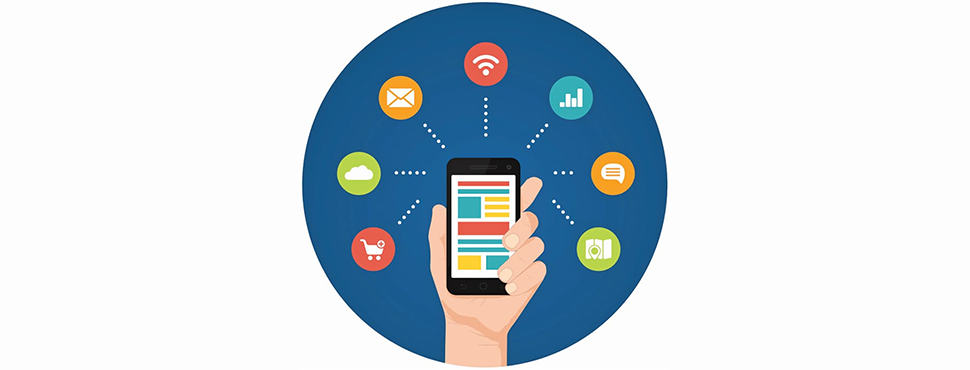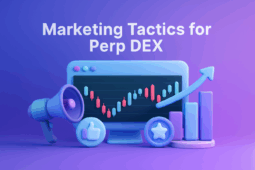share
DApps are an innovative way to make use of a blockchain’s capabilities. But it can be tough to find a plain English definition of exactly what they are and how they differ from traditional applications.
What Is a DApp? Is It Related to a Decentralized Network?
Decentralized apps, or DApps as they’re more commonly known, are applications that are built on top of decentralized peer-to-peer networks. Instead of being built on one computer, with one single entity in control, DApps utilize a network of computers based anywhere around the world.
With multiple computers operating and maintaining the network, DApps are able to incorporate many streams of content consumption, be it providing content, trading, or consuming it.
Although DApps can be based on a website or as a mobile app and are used in the same way as any other software application, they differ from normal apps in the following ways:
- Unkillable: If a significant amount of the DApps data is stored on a blockchain, then they have no single, central point of failure.
- Totally or partially decentralized: Some activity and data in a decentralized app run through a distributed network of machines/nodes, i.e., a blockchain network rather than a centralized server.

Optional extras often associated with DApps:
- Open source: You don’t technically have to open source your code to make your DApp, but it’s common. It gives your user base complete visibility and trust in your app.
- Tokens: Tokens are widely used in DApps and can be a great way to reward your community. Users’ money and rewards can stay in their own wallets with DApps. There is debate over what constitutes a DApp in the purest of senses. The key factor to remember is that DApps are built on a decentralized network.
- Data ownership: Many DApps, specifically DApp creators, don’t own their users’ data. Users are empowered to own their own data, share with different DApps or remove it fully from the ecosystem.
How Do DApps Work?

A DApp works similarly to a blockchain network. Each DApp user functions as a network node in this scenario. Each user keeps an eye on the network’s correct operation and ongoing operations.
The communication channel that the decentralized application uses is the blockchain. In it, a record is kept of each operation that passes through the smart contract that controls the DApp.
The acceptance or not of the operations carried out by the users of the DApp, is subject to the programming of the said smart contract. In this way, it seeks to guarantee that all participants act within the framework specified by it.
The smart contract, in this case, is an intermediate point that is in charge of corroborating the validity of each interaction. Every time there is a new operation in the decentralized application, the platform information is updated on each node.
This ensures that the information is stored in each of them. In this way, each user contributes to keeping the application running with the resources of their computer. This structure also guarantees that the platform will always be in service.
This is due to the impossibility of deregistering all the nodes of the network at the same time. A situation that can occur due to a computer attack or other reasons such as censorship.
At this point, DApps make a breakthrough because by working and running on a blockchain, they enjoy their security, privacy, and even anonymity capabilities.
Additionally, they also guarantee that the data used by the DApp is only accessible to the person who originated said information. Thus, users maintain absolute control of their data at all times.
Advantages of Decentralized Apps Over Traditional Apps
Speed
The speed of DApps, in comparison to centralized ones, is quite slow. Blockchain Developers gave the average transaction that DApps can process per second to be 15 using the Ethereum network. This number is expected to increase over time as the adoption of DApps increases and advances in innovation. Therefore it is expected that it will be able to process thousands of transactions in some years to come.
Security
With the aid of smart contracts and blockchain tools, information on DApps is kept secure from hackers. It is important to note that users’ wallet addresses and interactions are stored when they use DApps and can be seen by everyone. Even with this, they are still more secure because they can’t be tampered with or altered.

Trust
One of the main advantages that DApps have over-centralized is that DApps have no central control system. Therefore, you can rest assured that your data and information are secured unless you decide to share them by yourself. Traditional apps like Google and Facebook have received a lot of backlash on how they handle their users’ data to advertisers. This is something that will never happen with DApps.
Practical Applications of DApps
Here are some segments in which DApps can be successfully operationalized.
Money Market and Transfer
Given the decentralized and independent nature of these apps, the apps can be used to smoothen financial transactions, and cryptocurrencies such as Bitcoin stand testament to it. By eliminating middlemen, the transfer, lending, and management of money can be sped up, and security can also be enhanced.
Decentralized Autonomous Organization (DAO)
DAOs are essentially leaderless faceless organizations running on the basis of predefined rules that are written into the blockchain. This would include things such as who can become a member, how the voting structure works, and how the value of the token can be exchanged. This organization can have a worldwide application and can operate without any trouble riding the blockchain bandwagon.
Business Process Management
The DApps can be employed by the companies to streamline the processes that are used by the company right from the point of manufacture of a good or receiving an order till the point that the delivery is completed and payment is collected. One use case is the supply chain management use of blockchain, which will be based on decentralized apps. A simple example of this is the integration of RFID chips into the shipment so that it can be scanned at the delivery point. This happens along with a smart contract that would ensure payment is made as soon as the shipment is scanned, which would increase the efficiency of the entire process.

Platforms for Developing DApps
Ethereum
Ethereum is an open-source blockchain-based platform that was the first to show people the true potential of blockchain. The platform introduced concepts like smart contracts and decentralized applications to the crypto space. It allows developers from all over the world to create and deploy DApps on the platform.
Ethereum has its own coding language – Solidity. Smart contracts serve as the blueprint of DApps.
EOS
EOS is a blockchain-based platform that enables the creation of DApps. The platform that has been dubbed the Ethereum Killer attempts to solve problems like speed, scalability, and flexibility plaguing the blockchain ecosystem.
EOS involves several validators who verify transactions based on a “Delegated Proof of Stake” consensus algorithm.
Examples of EOS-based DApps include Sense Chat, Everipedia, and Newdex, among others.
TRON
Launched in 2017, Tron is another blockchain-based decentralized platform that allows developers to create decentralized applications and share media content. Similar to EOS, Tron also functions on a Delegated Proof of Stake consensus algorithm.
The Future of DApps

Looking at the speed with which decentralized applications are developed and improved, we can expect them to grow exponentially in the next 10 years. While a completely decentralized online world is still a utopia, DApps make it easier for everyday users to use blockchain technology for their daily needs.
Decentralized apps are going to become a part of day-to-day living, helping to reduce costs and cutting out third parties from personal and business transactions. These applications are expected to take automation and security to a new level.
With more adoption, we can expect DApps to evolve, improving their user interface design and overall usability. They have already taken place as a valuable tool and paved the way for further growth and development. Decentralized applications are expected to become mainstream as more investors and users take advantage of the efficiency of these platforms.






